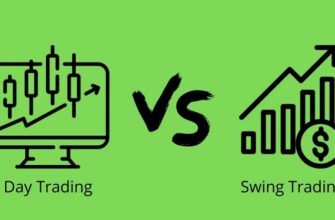Types of Trading: Exploring Stocks, Forex, Options, and Commodities
Trading in financial markets has evolved significantly over the years, providing a wide array of opportunities for investors and traders alike. In this comprehensive guide, we will delve into the various types of trading, focusing on stocks, forex, options, and commodities. Each market offers unique characteristics and requires a distinct set of strategies to navigate successfully. Whether you’re a seasoned trader or a beginner looking to venture into the exciting world of trading, understanding the fundamentals and key strategies is essential for achieving success and managing risks.
Stock Trading Strategies
1.1 Understanding the Stock Market
Before diving into stock trading strategies, let’s lay the groundwork by understanding the stock market itself. Stocks represent ownership shares in a company, and they are bought and sold on stock exchanges. The stock market serves as a platform where investors can trade these shares, and its fluctuations are influenced by various factors, including economic conditions, company performance, and geopolitical events.
1.2 Long-Term Investing
One popular stock trading strategy is long-term investing, where investors buy and hold stocks for an extended period, typically years or even decades. Long-term investing relies on fundamental analysis, where investors assess a company’s financial health, growth prospects, and competitive advantages. The goal is to profit from the company’s long-term growth and dividend payments.
1.3 Day Trading
Day trading is a more active and short-term approach to stock trading. Day traders buy and sell stocks within the same trading day, aiming to profit from short-term price fluctuations. This strategy requires quick decision-making, technical analysis skills, and risk management, as day traders are exposed to higher volatility and market noise.
1.4 Swing Trading
Swing trading strikes a balance between long-term investing and day trading. Swing traders hold positions for several days or weeks, capitalizing on price swings driven by market sentiment and technical indicators. This strategy allows traders to capture larger price movements while avoiding the stress of constant monitoring associated with day trading.
1.5 Growth Investing
Growth investing involves identifying companies with significant growth potential. Traders seek out firms that are expanding their market share, introducing innovative products, or experiencing rapid earnings growth. The focus is on capital appreciation, and growth investors are often willing to tolerate higher levels of risk for the potential of substantial returns.
1.6 Value Investing
Value investing, on the other hand, revolves around finding undervalued stocks that are trading below their intrinsic value. Traders using this strategy believe that the market has overlooked the true potential of these stocks, presenting an opportunity for significant upside once the market recognizes their value. Value investors often consider factors such as price-to-earnings ratio, dividend yield, and other valuation metrics.

Forex Trading for Beginners
2.1 What is Forex Trading?
Forex, short for foreign exchange, is the largest financial market globally, where currencies are bought and sold. The forex market operates 24 hours a day, five days a week, facilitating the exchange of currencies between banks, corporations, governments, and individual traders. Forex trading offers ample opportunities for profit, but it also carries substantial risks due to its high liquidity and volatility.
2.2 Basic Concepts and Terminology
For beginners, understanding some essential forex concepts and terminology is crucial. Key terms include currency pairs (e.g., EUR/USD, GBP/JPY), pips (percentage in point), bid and ask prices, and leverage. Familiarizing oneself with these terms lays the foundation for delving deeper into forex trading strategies.
2.3 Technical Analysis in Forex
Technical analysis plays a significant role in forex trading. Traders use price charts and technical indicators to identify trends, support and resistance levels, and potential entry and exit points. Moving averages, Relative Strength Index (RSI), and Fibonacci retracements are among the many tools used by forex traders to analyze price movements and make informed decisions.
2.4 Fundamental Analysis in Forex
Fundamental analysis involves evaluating economic indicators, geopolitical events, and central bank policies to assess a currency’s intrinsic value. Factors such as interest rates, GDP growth, employment data, and political stability can influence currency values. Combining fundamental analysis with technical analysis provides a comprehensive view of the forex market.
2.5 Risk Management
Effective risk management is essential in forex trading, especially for beginners. Setting stop-loss orders, adhering to position sizing principles, and avoiding excessive leverage are some of the strategies used to mitigate risk. Traders must develop a disciplined approach to protect their capital while navigating the dynamic forex market.
Options Trading Explained
3.1 Understanding Options
Options are financial derivatives that provide traders with the right, but not the obligation, to buy or sell an underlying asset at a predetermined price within a specified timeframe. They offer a unique way to profit from price movements in stocks, currencies, commodities, and more, with less capital than outright ownership.
3.2 Call and Put Options
Call options grant the holder the right to buy the underlying asset, while put options provide the right to sell it. Both call and put options have strike prices, which determine the price at which the asset can be bought or sold. Option traders can use various strategies, such as covered calls, protective puts, and spreads, to capitalize on different market scenarios.
3.3 Implied Volatility and Option Pricing
Implied volatility is a critical factor in option pricing. It represents the market’s expectations for the underlying asset’s price volatility over the option’s lifespan. Options with higher implied volatility tend to be more expensive, as there is a higher probability of significant price swings.
3.4 Options Trading Strategies
Options trading offers a wide range of strategies catering to different risk appetites and market conditions. Some popular strategies include:
a. Covered Call: Involves selling call options against a long stock position to generate additional income.
b. Protective Put: Combines long stock ownership with long put options to hedge against potential downside risk.
c. Straddle: Simultaneously buying a call and a put option with the same strike price and expiration, anticipating significant price volatility.
d. Iron Condor: A neutral strategy that involves selling both a call spread and a put spread, profiting from a range-bound market.
e. Butterfly Spread: Combines options with three different strike prices to profit from low volatility and a stable underlying asset.
Conclusion
Trading in stocks, forex, options, and commodities opens doors to a diverse range of investment opportunities. Each market requires a distinct set of strategies and a thorough understanding of its intricacies. Whether you’re interested in the long-term growth potential of stocks, the fast-paced world of forex trading, or the flexibility of options, continuous learning, disciplined risk management, and a strong grasp of market dynamics are key to success. As with any financial endeavor, aspiring traders should start with a clear plan, hone their skills through practice, and seek guidance from experienced mentors or financial advisors. Trading can be both rewarding and challenging, but with the right mindset and knowledge, traders can navigate the markets confidently and achieve their financial goals.








